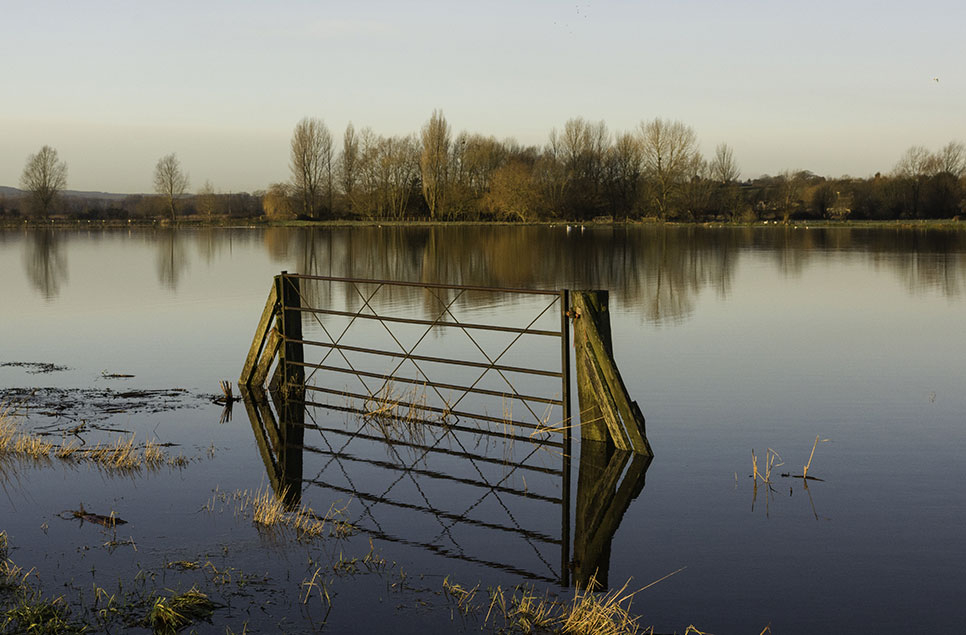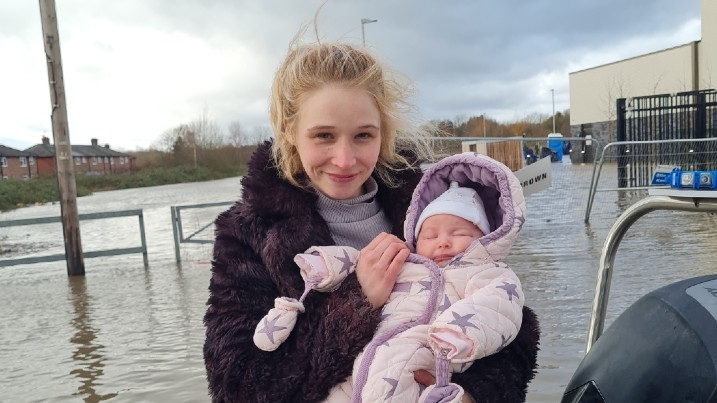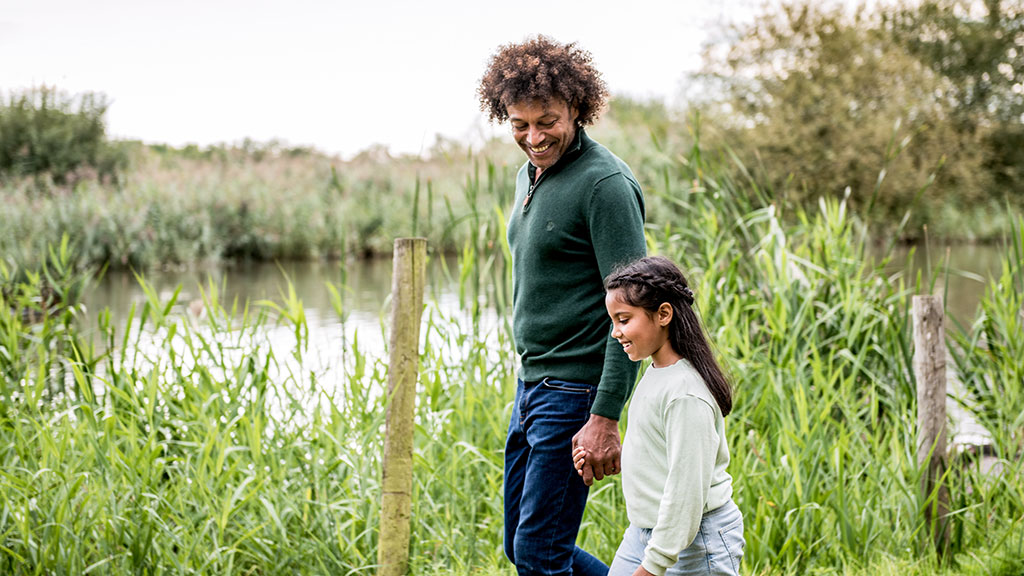Fighting water with wetlands – WWT urges the creation of more nature-based solutions to combat flooding

In the aftermath of Storm Christoph, The Wildfowl and Wetlands Trust (WWT) is calling for more nature rich wetlands in the UK to help stop repeats of this type of catastrophic flooding.
Conservationists are making a fresh push for a re-think on flood prevention after thousands of residents in the North West of England and Wales were evacuated from their homes and a warehouse storing the Oxford vaccine was compromised when the extreme weather event swept in from the Atlantic last week. Local communities are still dealing with the aftermath this week. There are currently 32 flood warnings and 54 flood alerts in place in the UK.
Wetlands – areas of land that are either covered with or are saturated with water, either permanently or seasonally - help shield communities by naturally preventing and mitigating the effects of flooding. WWT is pressing for more of these habitats as part of a natural solution to flooding, to be effectively incorporated into the UK government’s flood alleviation policies ahead of World Wetlands Day on 2 February 2021.
WWT’s Senior Project Manager for Wetland Landscapes, Tim McGrath, said:
We can fight water with wetlands. It might seem counterintuitive, but adding water in the right places can assist with flood prevention.
Nature rich wetland habitats such as wet grassland, peatlands, bogs, fens and saltmarsh soak up excess water, then release it slowly back into river systems, offering a sustainable long-term solution to the rising risk of flooding and unpredictable weather patterns caused by climate change.
The UK has lost 90% of its wetlands over the past 400 years[i]. In cities, rivers and streams have been built over and wetlands, which once would have absorbed and stored surplus water-flows, have been drained and channelled. In rural areas, historic wetlands have been drained for farming and development. The impact of these losses are becoming more severe as climate change increases the volatility of our weather.
Physical flood barriers like concrete walls and dredging can protect homes and businesses from flooding, but the cost of building and maintaining vast flood defence schemes for every village, town and property that floods is prohibitive. Other options are urgently needed if local homes and communities are to be protected more effectively in future.
Natural Flood Management (NFM), a term to describe using ponds, flood plains and wet woodlands to manage and hold water in the land for longer, offers a more natural, sustainable and cost-effective way of mitigating the risk which can bring multiple benefits for people and wildlife.
WWT is expert in creating, restoring and managing wetlands to help naturally alleviate flooding both in urban and rural settings and has been doing so for many years. It has been working with local authorities and other conservation charities on Natural Flood Management projects in the Cotswolds, Stroud and Gloucester. In Somerset, where staff have been planting hedgerows and creating wetlands to protect residents, the Trust has recently received £1.58m from the Government’s Green Recovery Challenge Fund to further protect and enhance the coast there.
WWT’s Carina Gaertner, who oversees the project in Somerset, said:
Overly managed landscapes have destroyed one of nature’s great flood defences – wetlands.
For the past two hundred years we have been guilty of mismanaging wetlands, clearing out watercourses, straightening and sanitising them; making water flow away as quickly as possible – but causing flooding downstream.
We need to rewind the clock and re-wild our rivers, streams and other wetlands. We need to change our mind-sets to a less tidy approach so water is held in the landscape for as long as possible to allow it to slowly pass through the catchment over a long period rather than rushing off the land in a flash flood.
In urban areas, rainwater has long been treated as waste to be channelled out of cities and towns via drains that can overflow following heavy periods of rain and spill into the sewage system. WWT promotes SuDS - sustainable drainage systems. They manage the rain at the point it hits the ground or roof, slow the flow of water and cleanse it as it passes. The water is then retained in a system of ponds, swales, rain gardens and filter strips which can be created anywhere. As they incorporate water and plants, they can help wildlife in the same ways as natural wetlands.
The costs of Storm Ciara and Storm Dennis that swept the UK in early 2020 are still being calculated. Across the country, hundreds of businesses were badly damaged. Early estimates suggest the cost to the insurance industry of both storms could hit £425 million. By the 2050s the annual average losses from coastal and river flooding in England and Wales could rise to between £1.6 and £6.8 billion[ii].
WWT is working closely with organisations like the Environment Agency to build up a body of evidence to help persuade Governments, businesses, landowners and property owners to invest in wetlands – be they woody dams, urban rain gardens or saltmarshes – as a nature-based solution to reducing flooding.
For more information on how nature-rich wetlands reduce flooding visit wwt.org.uk/flooding.
Case Study
Lauren Turner, 27, from Warrington, Cheshire, had to be evacuated by boat with her three young children aged 6, 2 and 2 months following Storm Christoph.
I first started to worry on Wednesday evening as the water level was creeping up the garden. When I woke up the next morning at 6am, the electrics had gone. It was only when I got to the top of my stairs that I noticed the entire ground floor of our house covered in murky water.

It was frightening. My poor six-year-old was inconsolable because he didn’t understand what was happening and thought that the water would keep rising and that we wouldn’t be able to escape.
We stayed upstairs until the rescue boats came for us in the afternoon. The fire services were brilliant and it was the first time I felt like I could relax and that my children and I were safe.
I am currently staying with the father of my children. We co-parent and thankfully have a good relationship.
I don’t know when we’ll be able to move back in. We were told that the floodwater had mixed with sewage so not only do the floors need to be replaced, the house will have to be deep-cleaned too. Everything on the ground floor is destroyed and needs replacing including my sofa, a bookcase, my rug and the kids’ toys which were downstairs. I have no idea what the cost will be, but I certainly can’t afford to do this regularly.
Apparently, this area is prone to flooding at this time of year but my neighbours have said they’ve never seen it this bad.
As a community, we are hoping something will be done so we don’t have to experience this again. We are all very worried.
I’ve never experienced flooding before and it has completely changed how I feel about my home. I used to feel safe there – I loved it – but now I’m afraid that this is something we’ll have to go through as a family, every year.



